Have you ever been to Japan? If so, what has impressed you most about Japan? Is it the delicious sushi and fresh sashimi? The fascinating cherry blossom season? Or the hiragana, katakana, and kanji on the street? Whatever it is, you probably already knew that Japan is a country that emphasizes politeness.
It is not only about behavior, but also exists in the language. This time, let’s take a look at a phrase that is used thousands of times every day: “yoroshiku onegaishimasu” below!
Contents
What is Yoroshiku Onegaishimasu?
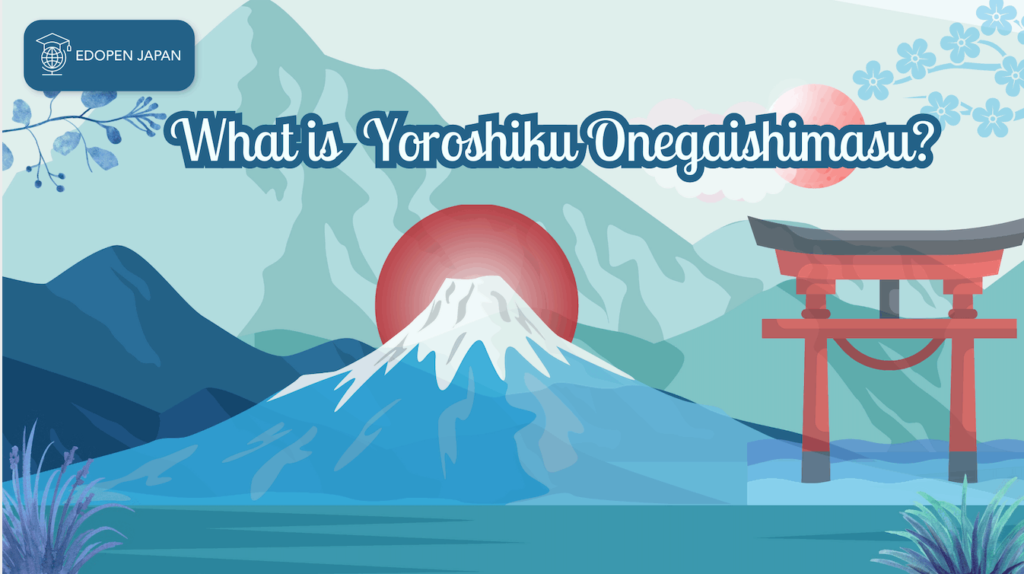
It is always difficult to define “yoroshiku onegaishimasu”. If you search the Internet dictionary, you may find definitions such as “please help me” or “please treat me well. You may be confused when you put the meanings together with the text you are trying to understand.
The difference in culture and language between the U.S. and Japan may be the reason for the inaccuracy of the translation. Let’s split the sentence into two parts and check the literal meaning.
よろしく (Yoroshiku)
It is based on 宜しい (yoroshii), which can also be written only in hiragana よろしい. “Yoroshii” is an adjective that can be considered a formal word of 良い (yoi or ii). “Yoroshii” has various meanings, including “okay,” “all right,” or “good. It is often used when asking for permission to do something. See the example below.
- このコップを使ってもいいですか? (kono koppu wo tsukattemo ii desu ka?)
- このコップを使ってもよろしいですか? (kono koppu wo tsukattemo yoroshii desu ka?)
While both phrases mean “May I use this cup?” or “Is it okay to use this cup?”, “yoroshii desu ka” sounds more polite. You can use this form with people who are not close to you.
There is one place in Japan where you will often be asked questions using this phrase, and that is the convenience store. Let me give you some examples.
- このままでよろしいですか? (kono mama de yoroshii desu ka ?)
This literally translates to “Is it okay as it is?” but really it means “Are you sure you don’t need a bag?
- 一万円からでよろしいですか?
(ichimanen kara de yoro shii desu ka?)
“Is it okay for you to pay with a ten thousand yen bill?”
If you pay with a ten-thousand-yen or five-thousand-yen bill, the cashier will usually confirm with the above sentence.
- レシートは宜しいですか?
(reshito wa yoroshii desu ka?)
“Do you need your receipt?”
After a long explanation of “yoroshii,” do you understand the use of the word? Then let’s continue. “Yoroshiku” is the adverb form of “yoroshii” with the last “i” replaced by “ku”. In this case, the adverb form of “yoi” and “ii” becomes “yoku”. “Yoroshiku” and “yoku” stand for the concept of “good” or “kind”.
お願いします (Onegaishimasu)
This part of the sentence is not as tricky as “yoroshiku”, “onegaishimasu” is used when you are asking for a favor or service. Grammatically, “onegaishimasu” follows the object of the sentence.
- In the restaurant…
水お願いします。(mizu onegaishimasu)
Water, please.
- On the taxi…
京都駅までお願いします。
(kyouto eki made onegaishimasu)
Please take me to Kyoto station.
The “お〜します” (o~shimasu) part is an expression called “kenjougo,” which is known as the humble form. This form is used when you are talking about yourself to someone of a higher position. In this case, you are humbling yourself. Another part of this phrase is a noun called “願い” (negai), which is derived from a verb “願う” (negau). “Negau” means “to hope” or “to ask.
By combining the words, when you want to ask others for a favor, you lower your “negai” to show your courtesy. In other words, “yoroshiku onegaishimasu” is a rather polite expression. If you are having a conversation with a close person, you can use the casual form “yoroshiku”.
When Do You Say Yoroshiku Onegaishimasu?
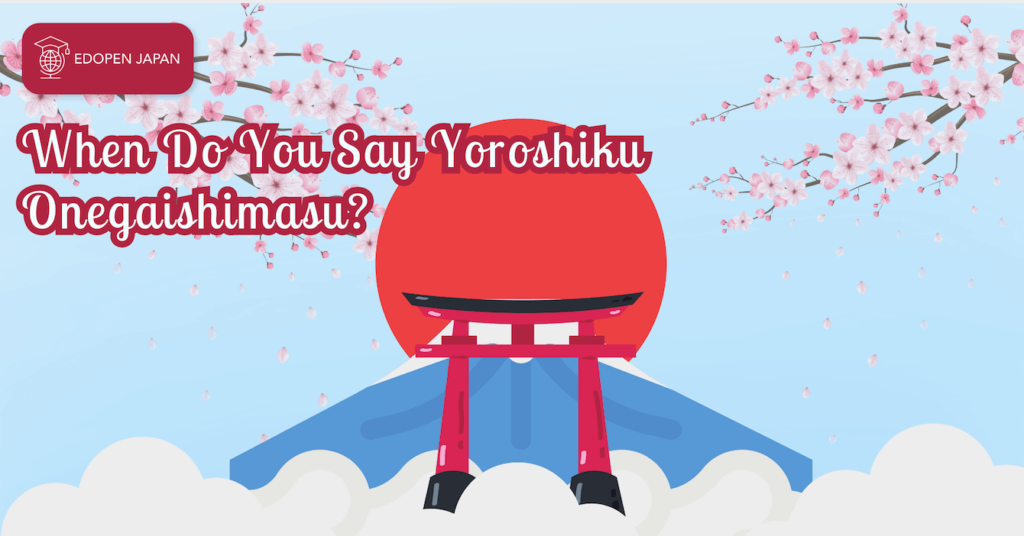
After the long explanation of grammar, I hope you have absorbed it well! I am sure that there are still many people who have a hard time with the mind-bending grammar above. A line from the movie Tenet says: “Don’t try to understand it. Feel it.”
Since there is no exact equivalence between Japanese and English for some expressions, let’s look at some situations and check the meaning of “yoroshiku onegaishimasu” in different circumstances. I will roughly divide them into three groups.
First: Meeting someone for the first time..
Occasion: meeting someone for the first time, first day at work, interview, at an event, joining a social media group.
Self-introduction 自己紹介(jikosyoukai)
The simplest self-introduction goes like below:
初めまして。(hajimemashite) Nice to meet you.
私はメアリーです。(watashi wa meari desu) My name is Mary.
よろしくお願いします。
Let’s say your friend introduces you to his/her friends, and that person might be your friend as well, in other words, you have a certain connection with that person. Then “yoroshiku onegaishimasu” indicates the concept that you would like to have a good relationship with that person.
Second, when you ask others for a favor…
(Conversation between good friends)
Tom: ちょっとコンビニ行ってくるけど、何かいる?I am going to convenience store, do you need anything?
Joy: じゃあ、おにぎりを一つ。Well…one onigiri.
Tome: 了解。No problem.
Joy: よろしく!
Since Mike and Mary are good friends, as mentioned earlier, they speak in a casual manner without using “onegaishimasu”. Here, “yoroshiku” indicates that you are leaving a favor, task, or request to others and showing your appreciation.
(Conversation between co-workers in a office)
Joy: この仕事お願いしてもよろしいですか?Can you do me a favor?
Tom: はい、いいですよ! Yes, no problem.
Joy: ありがとうございます。よろしくお願いします。
Third: At the end of a phone call / email…
You can never go wrong with “yoroshiku onegaishimasu” at the end of a phone call or email. The expression in the third group is mainly about showing your courtesy.
(Conversation when Tom is making an appointment with a dental clinic on the phone)
Tom: 明日10時の予約はまだ取れますか?Is it available to make an appointment at 10 tomorrow?
Clinic: はい、大丈夫ですよ。 Yes, it’s still available.
Tom: では、その時間でお願いします。よろしくお願いします。Then , I will take the appointment.
How to Reply to “Yoroshiku Onegaishimasu”?
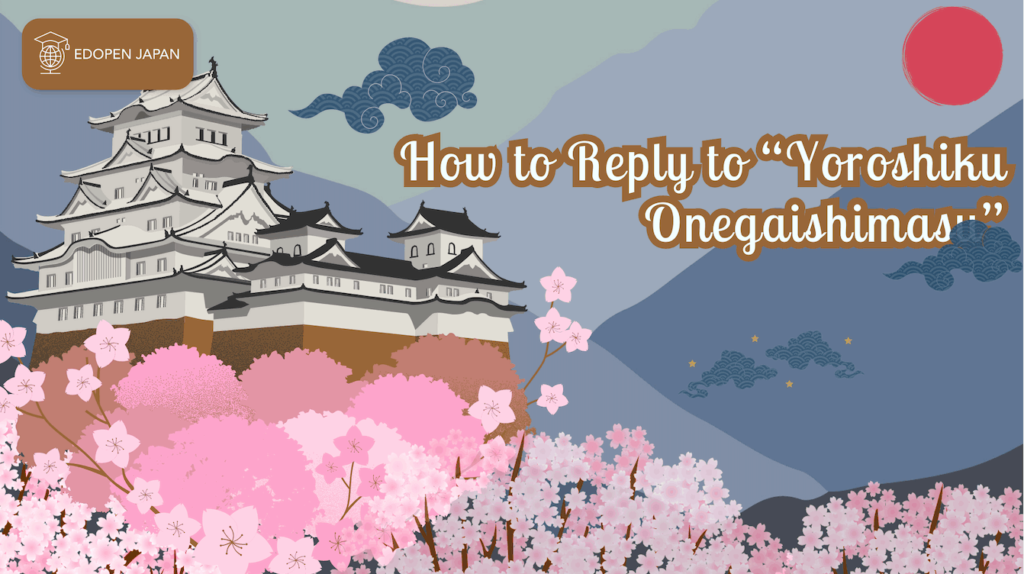
To be simple, you can say こちらこそよろしくお願いします (kochirakoso yoroshiku onegaishimasu) to most of the occasion.
“kochirakoso” literally means “me, too”.
“Kochira” means “this side” which refers to the person who is talking.
“koso” is a word hard to define as well. But basically, “koso” emphasizes the word that comes in front of it.
If someone asks you for a favor, you can reply かしこまりました (kashikomarimashita), which is a more formal version of わかりました (wakarimashita), meaning “I got it” or “no problem.
Summary
When attending important events or interviews, I have always been told that “overdressed is always better than underdressed. The same concept can help you learn the complicated formal forms of Japanese.
Even if you are still in the early stages of learning the language and are struggling to form a complete sentence, try using “yoroshiku onegaishimasu” in your conversation or message. I am sure that the person on the other side will be able to receive your greetings. On the other hand, by using “yoroshiku onegaishimasu” in practice, you will gradually be able to understand the meaning.
In addition, please check out our detailed article on important phrases if you want to learn some others Japanese phrases too below!
Happy Birthday in Japanese: Everything You Need to Know
What’s the meaning of “Sasuga”(さすが)?
What’s the meaning of “Naruhodo”(なるほど)?
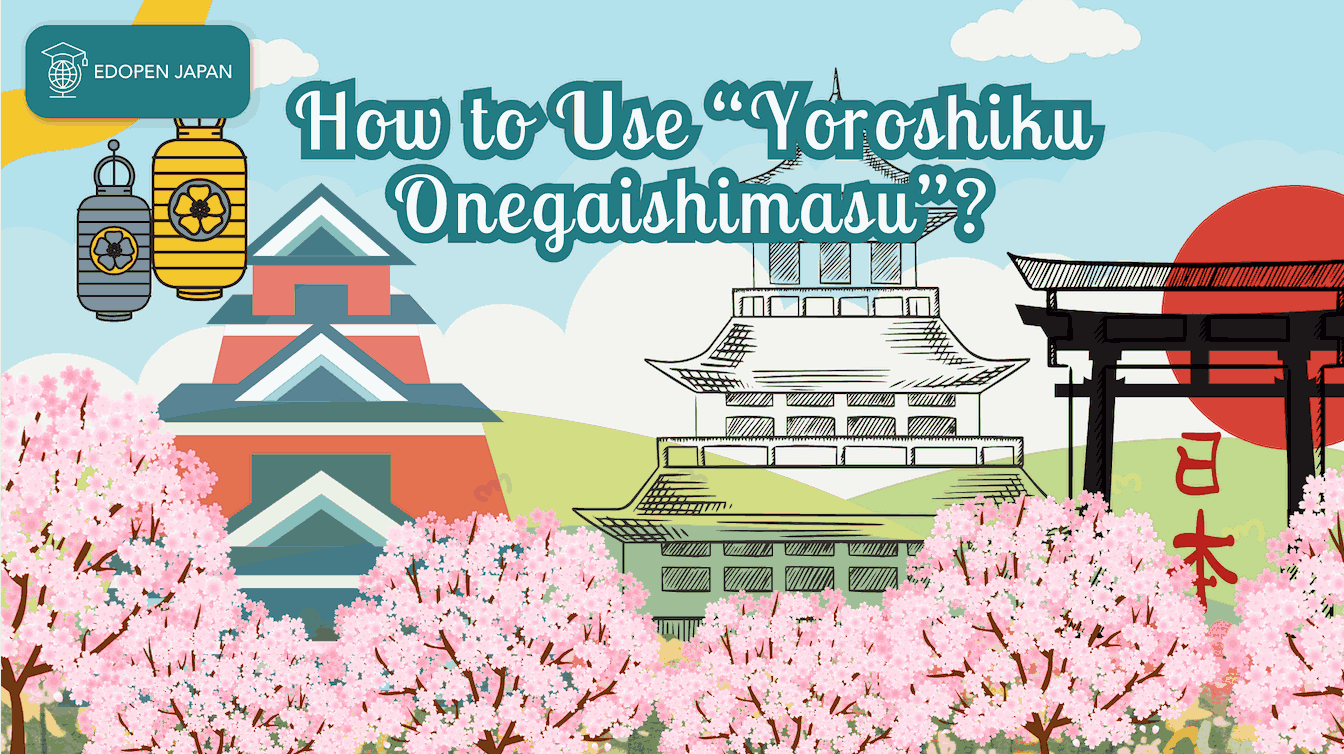



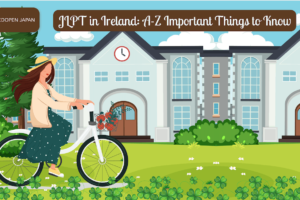


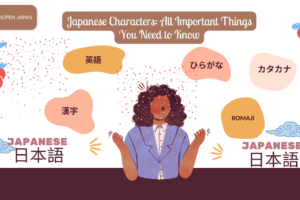





Leave a Reply